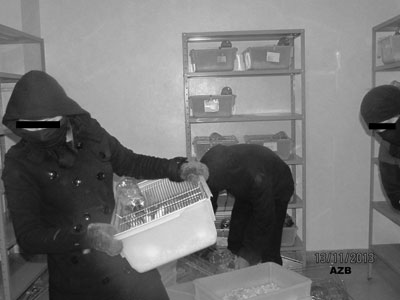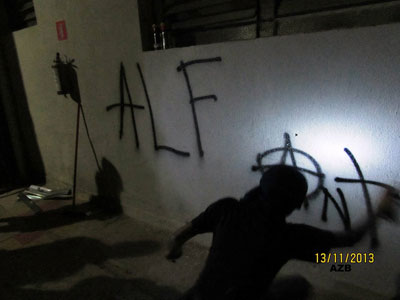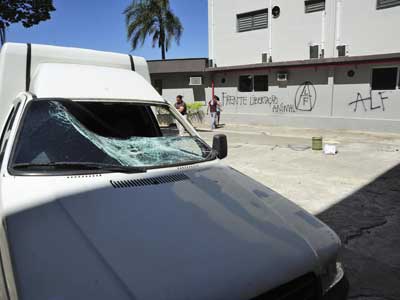 6th Dec from Inside Climate News:
6th Dec from Inside Climate News:
Worst-Case Scenario for Oil Sands Industry Has Come to Life, Leaked Document Shows
Industry consultants said anti-tar sands push could become ‘the most significant environmental campaign of the decade’ if activists were left unopposed.
by Katherine Bagley
As environmentalists began ratcheting up pressure against Canada’s tar sands three years ago, one of the world’s biggest strategic consulting firms was tapped to help the North American oil industry figure out how to handle the mounting activism. The resulting document, published online by WikiLeaks, offers another window into how oil and gas companies have been scrambling to deal with unrelenting opposition to their growth plans.
The document identifies nearly two-dozen environmental organizations leading the anti-oil sands movement and puts them into four categories: radicals, idealists, realists and opportunists—with how-to’s for managing each. It also reveals that the worst-case scenario presented to industry about the movement’s growing influence seems to have come to life.
The December 2010 presentation by Strategic Forecasting, or Stratfor, a global intelligence firm based in Texas, mostly advised oil sands companies to ignore or limit reaction to the then-burgeoning tar sands opposition movement because “activists lack influence in politics.” But there was a buried warning for industry under one scenario: Letting the movement grow unopposed may bring about “the most significant environmental campaign of the decade.”
“This worst-case scenario is exactly what has happened,” partly because opposition to tar sands development has expanded beyond nonprofit groups to include individual activists concerned about climate change, said Mark Floegel, a senior investigator for Greenpeace. “The more people in America see Superstorm Sandys or tornadoes in Chicago, the more they are waking up and joining the fight.”
[View the documents at Inside Climate News]
Since the presentation was prepared, civil disobedience and protests against the tar sands have sprung up from coast to coast. The movement has helped delay President Obama’s decision on the Keystone XL pipeline—designed to funnel Canada’s landlocked oil sands crude to refineries on the Gulf Coast—and has held up another contentious pipeline in Canada, the Northern Gateway to the Pacific Coast.
The Power Point document, titled “Oil Sands Market Campaigns,” was recently made public by WikiLeaks, part of a larger release of hacked files from Stratfor, whose clients include the Departments of Homeland Security and Defense, Lockheed Martin, Raytheon and the American Petroleum Institute, the oil industry lobby. It appears to have been created for Calgary-based petroleum giant Suncor Energy, Canada’s largest oil sands producer.
The company told InsideClimate News that it did not hire Stratfor and never saw such a presentation. Suncor is mentioned 11 times in the document’s 35 pages and all of Stratfor’s advice seems to be directed at the energy company. For example, one slide says, “Campaign ends quickly with a resolution along the lines Suncor had wanted.” In several emails released by WikiLeaks, Stratfor employees discuss a $14,890 payment Suncor owes the company for two completed projects, though no details were provided.
The presentation is the latest in a series of revelations that suggest energy companies—which for most of their history seemed unfazed by activists—have been looking for ways to dilute environmentalists’ growing influence.
Earlier this year, TransCanada, the Canadian energy company behind the Keystone XL, briefed Nebraska law enforcement authorities on how to prosecute demonstrators protesting the 1,200-mile project. In 2011, Range Resources, an oil and gas company, allegedly hired combat veterans with experience in psychological warfare to squash opposition of natural gas drilling.
“The Stratfor presentation isn’t a complete surprise,” said Scott Parkin, a senior campaigner for the Rainforest Action Network and volunteer organizer for Rising Tide North America, both grassroots environmental groups. “As opposition has grown, coal, oil and gas companies are all starting to put more money into responding—from surveillance to protection to public relations.”
Who Was Targeted?
For each of Stratfor’s categories of environmental activist—radicals, idealists, realists and opportunists—the presentation explains how their campaigns are structured and how the fossil fuel industry could deal with them.
Three grassroots organizations—Rising Tide North America, Oil Change International and the Indigenous Environmental Network—were labeled radicals. Greenpeace and the Rainforest Action Network were classified as a cross between radicals and idealists. Sierra Club, the nation’s largest environmental group, Amnesty International and Communities for a Better Environment, among others, were labeled idealists. Several mainstream environmental groups, including the National Wildlife Federation, World Wildlife Fund, Natural Resources Defense Council and Ceres, a nonprofit that organizes businesses, investors and public interest groups, were called realists.
It then lays out tactics the groups would use to push for change. They include holding demonstrations outside annual meetings and marketing events, generating fear of oil spills and other environmental disasters, targeting CEOs and their families, collaborating with other green groups, and splitting the fossil fuel industry on the issue by praising companies working with activists and publicly shaming those that aren’t.
The presentation says that while environmental groups are publicly fighting to stop the expansion of the oil sands, their “real demand” is for fossil fuel companies to adopt a “global code of conduct”—a set of best practices not required by law, but that take into consideration things like greenhouse gas reduction policies and human rights.
The Power Point also describes all the ways fossil fuel companies like Suncor could choose to react to green groups’ campaigns, such as limiting contact with the organizations, intentionally delaying negotiations, developing its own environmental initiatives to overshadow activists’ demands, or simply not responding. It provides the pros and cons of each public relations decision, as well as the best- and worst-case outcomes for each.
For example, Stratfor said that choosing not to respond could be useful because in 2010, “activists are not stopping oil sands’ growth and they have no power in Alberta or Ottawa. Chance of success with U.S. government is slim.” The best outcome from a no-response strategy, according to the presentation, is that green “groups move to fracturing [natural gas fracking] or some other venue to press for the first major code of conduct.”
Stratfor would not answer questions about the presentation because it has a policy not to comment on any of the WikiLeaks documents.
Several environmental groups named in the Stratfor presentation said they weren’t surprised by the consulting firm’s assessment of their work, but were disappointed, especially by its assumption that all they wanted was a code of conduct.
“The environmental community has been very united in saying that we need to stop tar sands expansion and clean up the mess already made there,” said Susan Casey-Lefkowitz, director of the Natural Resources Defense Council’s international program. “That’s the only real path forward if we’re going to protect not only the health of communities on the ground in the boreal forests near the tar sands region, but also around the world from the impacts of climate change. We’re not looking for a code of conduct.”
For many, the leaked presentation provided proof that their work was having an impact, boosting their confidence to keep protesting.
“Knowing that groups like Stratfor are targeting us, surveying us, and also analyzing us shows how powerful these movements have become,” said Parkin of the Rainforest Action Network and Rising Tide North America. “Obviously this wasn’t meant for public consumption, but this doesn’t intimidate us. If anything, it emboldens us. It encourages us to push harder.”
 4th Dec
4th Dec 
 6th Dec from
6th Dec from 



 November 15th, Mi’kmaq demonstrators declared “victory
November 15th, Mi’kmaq demonstrators declared “victory
 14th November One week after
14th November One week after  14th November One week after
14th November One week after 


 13th November
13th November